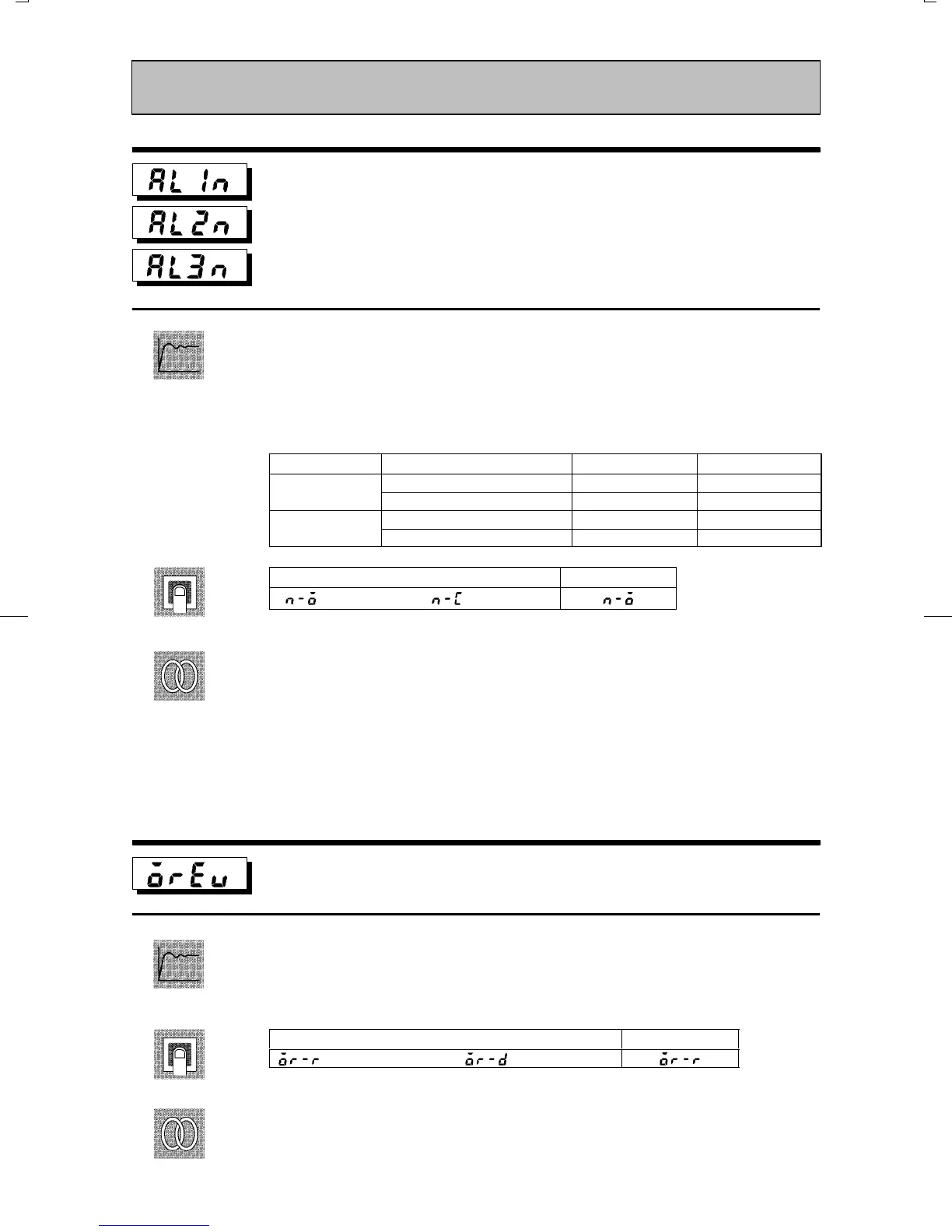E5CK
5–35
Alarm 1 open in alarm
Alarm 2 open in alarm
Alarm 3 open in alarm
Conditions of Use
Alarms must be assigned as outputs. For
example, if alarm outputs 1 and 2 only are
assigned as outputs, the “alarm 3 open in
alarm” parameter cannot be used.
Ă• Sets the output states of alarms 1 to 3.
Ă• When the controller is set to close in alarm," the status of the alarm output function
is output as it is. When set to open in alarm," the status of the alarm output function
is output inverted. The following table shows the relationship between alarm output
functions, alarm output and output LEDs.
Alarm Output Function
Alarm Output Output LED
ON ON Lit
ose
n a
arm
OFF OFF Not lit
ON OFF Lit
pen
n a
arm
OFF ON Not lit
Setting Range
Default
“”: Close in alarm/ “ ”:Open in alarm
ĂRelated description
3.4 Setting Alarm Type (page 3Ć10)
ĂRelated parameters
Alarm value 1" Alarm value 2" Alarm value 3" (level 1 mode)
Alarm 1 hysteresis" Alarm 2 hysteresis" Alarm 3 hysteresis" (level 2 mode)
Alarm 1 open in alarm" Alarm 2 open in alarm" Alarm 3 open in alarm" Control
output 1 assignment" Control output 2 assignment" Auxiliary output 1 assignĆ
ment" (setup mode)
Direct/Reverse operation
Ă• Direct operation" (or normal operation) refers to control where the manipulated
variable is increased according to the increase in the process value. Alternatively,
reverse operation" refers to control where the manipulated variable is increased
according to the decrease in the process value.
Setting Range
Default
“ ” : Reverse operation/ “ ”:Direct operation
ĂRelated description
3.3 Setting Output Specifications/Direct/reverse operation (page 3Ć8)
Setup Mode
Function
Setting
See
Function
Setting
See
